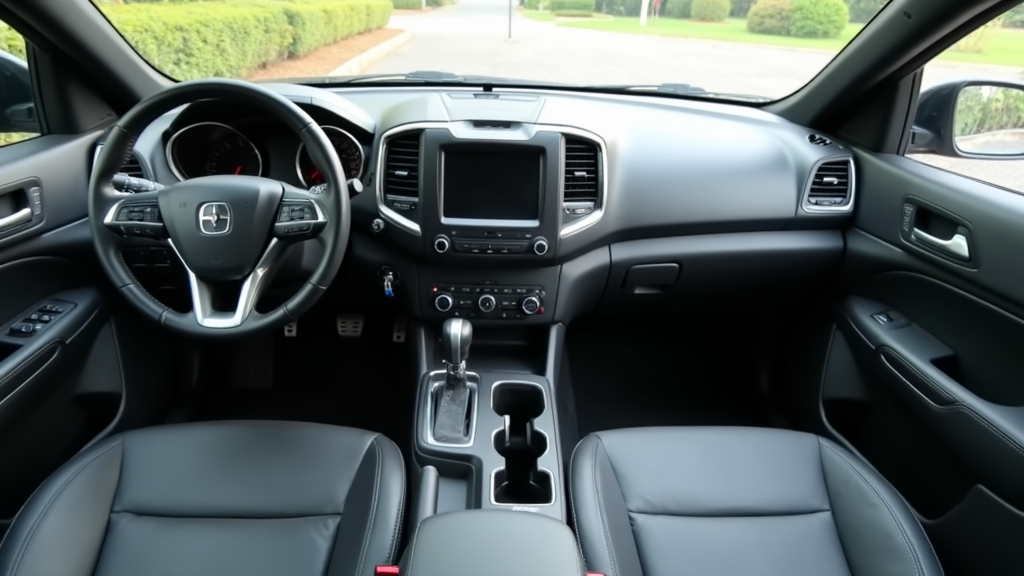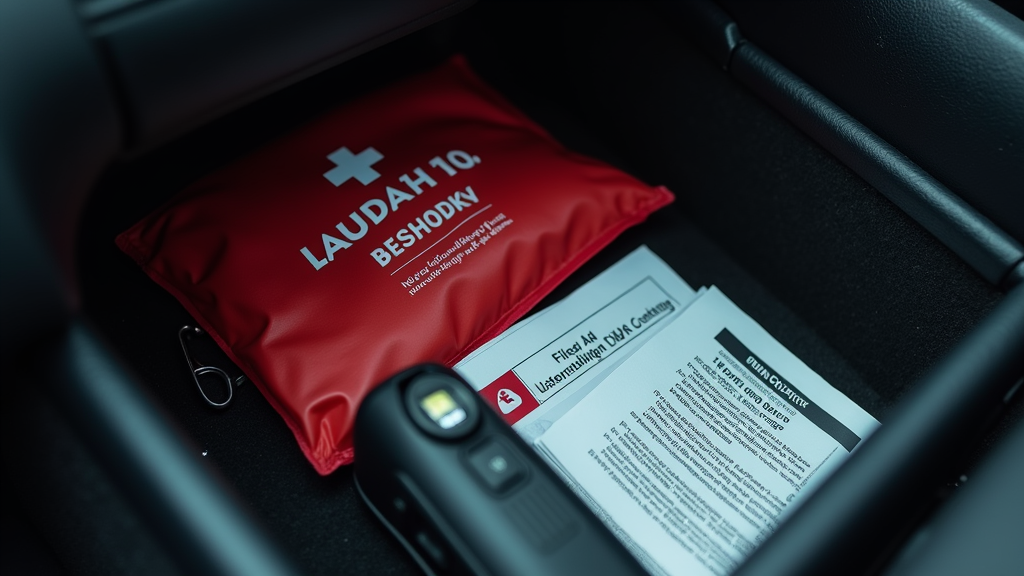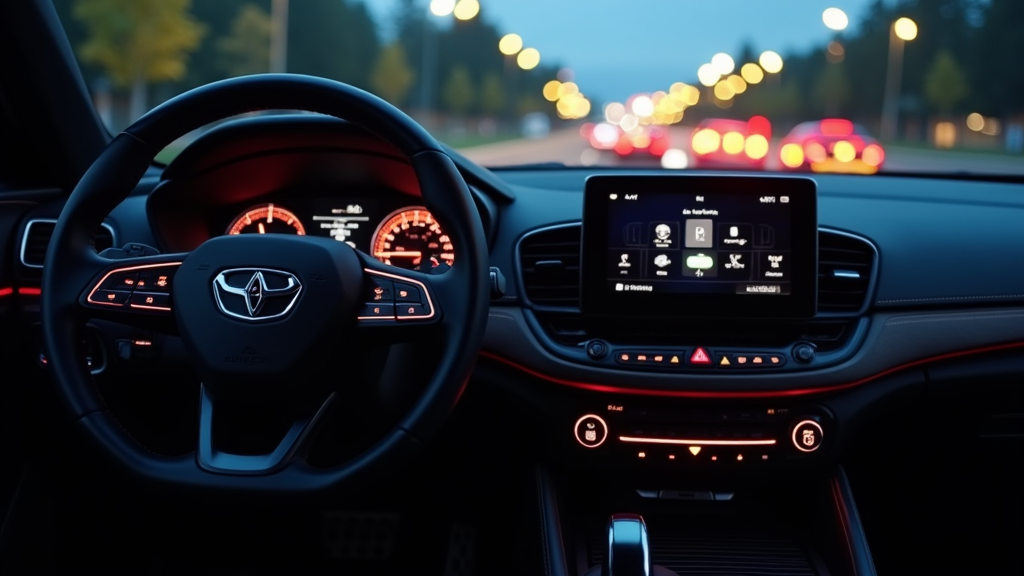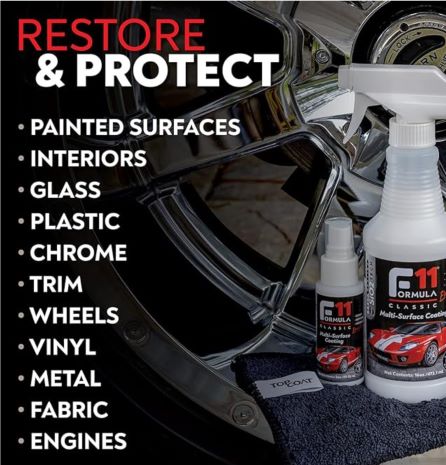Giving your vehicle’s interior a proper once-over before you begin your adventure can make a huge difference in both comfort and safety. Spending a little time on these checks means you’re less likely to run into annoying or even risky issues down the road.
I always find it surprising how easy it is to miss something small that later turns into a bigger hassle. Anyone, from daily commuters to big family RV road trippers, will benefit from a solid routine. So here’s my list of the top 10 interior checks to perform before hitting the road.
Why Regular Interior Checks Matter for Your Adventure
I’ve learned that overlooking the inside of your vehicle can lead to some real headaches. Simple things, such as a misplaced charger or a broken seatbelt, can slow you down or even put your safety at risk. Comfortable seats, working climate controls, and a tidy space really shape how the drive feels. Even something as small as a sticky spill on the console can be pretty distracting when you’re trying to relax or focus on the road.
Taking five or ten minutes to go over everything feels like a small chore at first, but it’s an easy habit that pays off quickly. Modern vehicles often have lots of tech and comfort features, and if you know everything is working before you set off, you’re setting yourself up for a smoother trip.
Even if you’re not heading far, these checks are worth your time. Try squeezing in a quick interior sweep every week, and you’ll spot potential troubles fast, saving time and money in the long run.
Starting Fresh: Clearing Clutter and Cleaning Surfaces
Messy interiors can be more than an eyesore; loose items can actually be dangerous if you need to brake suddenly. I clear out old receipts, empty bottles, and any gear that I won’t need on this drive. For families, toys and snacks seem to multiply, so giving everything a quick sort helps keep things tidy.
After the big stuff is gone, I give all surfaces a quick wipe-down. Dusty dashboards and sticky cup holders just feel gross and can lead to allergies or odd smells, especially when the weather’s warm.
Glass cleaner on the inside of the windows helps, too. Clean windows reduce glare and help you see better at night or in challenging weather conditions. Taking the time to keep floors and mats vacuumed will also help preserve your car’s interior and keep things feeling fresh.
Seat Belts and Airbags: Simple Checks for Major Safety
Seat belts save lives, plain and simple. I always click each belt in every spot before loading up, making sure they retract smoothly and lock when tugged. If a belt’s slow to return or feels stuck, it’s definitely worth getting checked out. Better to know now than have it jam when you actually need it.
For airbags, the dashboard warning light should switch off after starting the car. If it stays lit, the system might have an issue. This isn’t something I ever want to ignore, since airbags only work when they’re in top shape. A mechanic can handle this check if you’re unsure. Safety systems are really important for every drive.
Dashboard: Warning Lights, Gauges, and Controls
The first thing I do is turn the key to the on position and watch for warning lights. A quick check of gauges and icons alerts me to anything weird like low oil or a battery problem. If you see something flashing or staying on, refer to your manual or use an app to check its meaning. It’s way better to learn about a low tire or a blown fuse before you’ve started your journey.
It’s also smart to make sure screen brightness and instrument lighting are comfortable, especially if you’ll be driving at night or through tunnels. A too-bright dash can be distracting, and dim settings make it hard to track your speed or other info.
Seating Position and Adjustments
Uncomfortable seats are something few people think about before they get on the road. I always adjust my seat and the headrest, making sure I can reach the pedals, see the mirrors, and still relax my arms. This stuff is easy to forget when you’re in a hurry, but a poor seat position can cause back pain or make it tricky to reach the wheel comfortably.
If you have passengers, especially kids in booster seats or car seats, double-check that everything is installed correctly. Car seats that aren’t properly secured can be really dangerous. Even adult passengers may need a reminder to set their seatbacks up and buckle in, especially for longer trips.
For drivers who switch cars often or if you share your ride, take a moment to adjust the seats and mirrors every time. Personalized comfort not only makes the drive more relaxing but also improves alertness and safety behind the wheel.
Climate Controls and Air Quality
There’s nothing worse than realizing your car’s heater is busted on a freezing morning, or your AC does nothing but blow hot air in summer. I always test all fan speeds and temperature settings before hitting the road, even in mild weather.
Sometimes, simple things like a clogged cabin air filter can make a huge difference in both comfort and air quality. Replacing these filters is easier and cheaper than many people think. It can help reduce dust and pollen inside the car.
Vents also collect dust over time, so I give them a quick pass with a cleaning wipe, which helps improve airflow and reduces strange smells. A well-maintained climate control system makes for a comfortable trip for everyone, and it helps keep everyone alert, especially on longer drives. On top of that, a quality air freshener and regular filter changes can give your driving experience a boost.
Mirrors, Windows, and Visibility
Clear visibility is one of those things I never overlook. After cleaning the inside of windows, I check for streaks or spots that might cause glare. Adjusting all three mirrors – the rearview and both sides – takes seconds but can save you a lot of worry. Blind spots are a real problem if your mirrors are out of place. It’s a good time to check if any windows stick or move slowly, especially if you’re heading into a toll or drive-thru. If you spot any chips or cracks, it might be smart to get them fixed sooner rather than later.
Don’t forget to check the function of your window controls. Slow or stuck windows can be a symptom of a broader electrical issue, which, if left unchecked, could affect other systems in your vehicle. Regularly cleaning rubber seals with a gentle cleaner will also help prevent sticking or weather-leak issues over time.
Navigation and Tech: Power Sources and Charging Cables
Most of us rely on phones or built-in navigation systems these days. Before leaving, I check that all devices are charged and any backup chargers or cables are handy.
Power points, cigarette lighters, and USB ports sometimes stop working, so making sure they work saves a lot of hassle. If you’re relying on a GPS, have a backup plan like a physical map or offline app, especially for trips into rural areas where the phone signal can drop out.
If your car uses Bluetooth or a fancy infotainment system, quickly test the connection. Dropped calls or broken streaming features are frustrating when you’re relying on hands-free features for music or calls. Keeping an extra cable and adapter stashed in your console is a smart strategy.
Interior Lighting and Emergency Tools
I always test overhead lights and reading lamps. Good lighting helps find stuff on the floor and keeps passengers happy at night. Non-functioning lights are cheap and simple to change, even for beginners. In the glove box or under the seat, I keep a small flashlight; it always comes in handy for looking under seats or finding small items when it’s dark.
It’s smart to check that your basic emergency kit is stocked. This means having a working flashlight, a first aid kit, road triangles or flares, and spare batteries. If you travel with pets or kids, some extras like wet wipes and bottled water can make a big difference during small mishaps. Make it easy to reach these essentials from the driver’s seat if possible, so you’re prepared even at a moment’s notice.
Extra Comfort and Convenience: Snacks, Trash Bags, and Personal Essentials
I add a few personal touches to make my trips smoother. Small trash bags in the door pocket keep wrappers and receipts contained. A bottle of hand sanitizer in the console and some napkins or cleaning wipes help handle small messes. If you’re driving a long distance, I usually stash some snacks and small bottles of water where they’re easy to grab while driving.
Everyone’s needs are different, so your essentials might include sunglasses, tissues, or even a travel pillow. Taking a minute to gather your favorites makes your travel time more enjoyable. If you have passengers, invite them to do the same.
Common Interior Issues and How To Handle Them
- Sticky buttons or jammed controls: Light cleaning sprays and a soft brush can help clear up buttons or dials that stick. If something seems broken, avoid forcing it and mention it to your mechanic.
- Weird odors: Musty or sweet smells often mean a spill under a mat or an old air filter. A quick sniff will usually point you in the right direction. Air fresheners help short-term, but cleaning the floor and checking filters tackles the cause.
- Tech not connecting: Restart phones or the car before digging deeper. Sometimes Bluetooth or USB connections only need a quick reset. Updates to your phone or infotainment system can also mess with connections.
- Loose or noisy interior parts: Rattling can be caused by cup holders, loose panels, or misplaced gear under the seats. Try shifting items and tightening any loose pieces you notice.
Tackling these problems before you leave means fewer distractions and a more peaceful ride. Prevention’s always easier than an on-the-road fix. Consider keeping a small set of basic tools in your vehicle for tightening or minor repairs while away from home. These little proactive steps can help prevent a minor annoyance from turning into a bigger issue mid-trip.
Frequently Asked Questions
Here are some answers to the most common questions about prepping the inside of your car before a drive:
Question: What’s the easiest way to keep a car interior organized every day?
Answer: Small organizers in the seat pockets and trunk are very helpful. Tossing out trash at every stop and putting things back in their spot after a drive makes it easier to keep tidy.
Question: How often should I check the interior before a road trip?
Answer: A quick check before every trip is smart, but a more careful look at least monthly is really helpful, especially for people who drive a lot or have kids and pets in the car often. Doing a thorough check every season also helps you spot slow-building issues, like a gradually failing heater or sticky controls.
Question: Are aftermarket seat covers or mats worth it?
Answer: They’re an excellent choice for protecting your car’s interior, especially if you eat or drink on the go or have pets. Look for easy-to-remove versions so you can shake out crumbs and keep things looking sharp without much effort.
Question: What interior safety gear do you recommend for longer trips?
Answer: Make sure you have a flashlight, a first aid kit, a phone charger, and some emergency snacks and water. If you’re driving in winter or remote areas, add blankets and extra batteries, too. It never hurts to add a simple toolkit and reflective vest for additional peace of mind.
Personal Tips for Smoother, Safer Drives
These checks might look like a lot, but they become second nature with practice. I keep a basic checklist in my glove box so I do not miss anything, especially on busy mornings.
Getting into the rhythm of checking my car’s interior before every drive has saved me plenty of trouble, from messy spills to unexpected tech glitches. A little attention to your vehicle’s comfort and safety features does wonders for peace of mind while you travel.
I hope these tips help keep your next trip smoother and safer. Keep checking, keep driving, and enjoy the ride!
You can learn about all our travel adventures and about us by clicking here.











Recent Comments